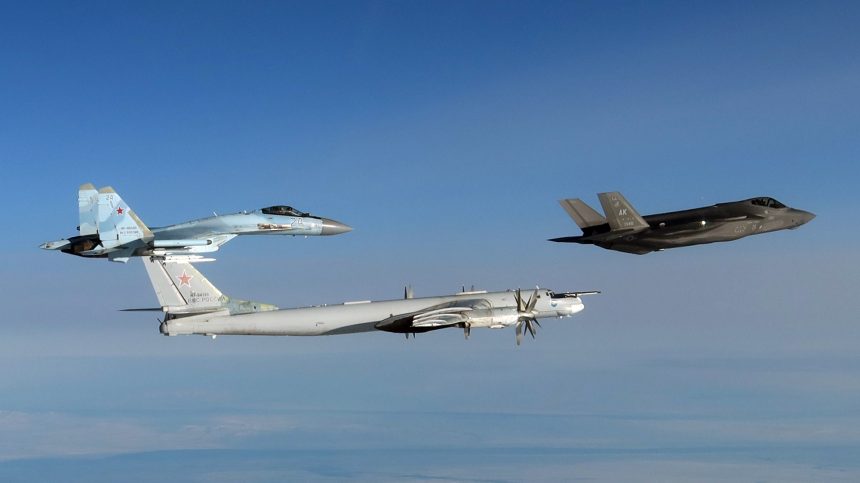The Russian “package,” which included armed Su-35 Flanker-E fighters, was intercepted on two consecutive days in international airspace west of Alaska.
On Feb. 18, 2025 the North American Aerospace Defense Command (NORAD) published a press release saying it had detected and tracked Russian military aircraft operating in the Alaskan Air Defense Identification Zone (ADIZ).
“The Russian aircraft remained in international airspace and did not enter American or Canadian sovereign airspace. This Russian activity in Alaskan ADIZ occurs regularly and is not seen as a threat,” the press release added.
Some interesting photos taken by the U.S. military aircraft involved in the intercept have now been released. These images offer additional context and details about the “close encounter” that occurred earlier this week.

In fact, the images, taken on Feb. 18 and 19, over the Bering and Chukchi Seas, show U.S. Air Force F-35A chasing two Russian Tu-95MS strategic missile carriers escorted by two Su-35s. Noteworthy, the Su-35S Flanker E aircraft were armed and carried a pair of R-77s and R-73 AAMs (Air to Air Missiles).
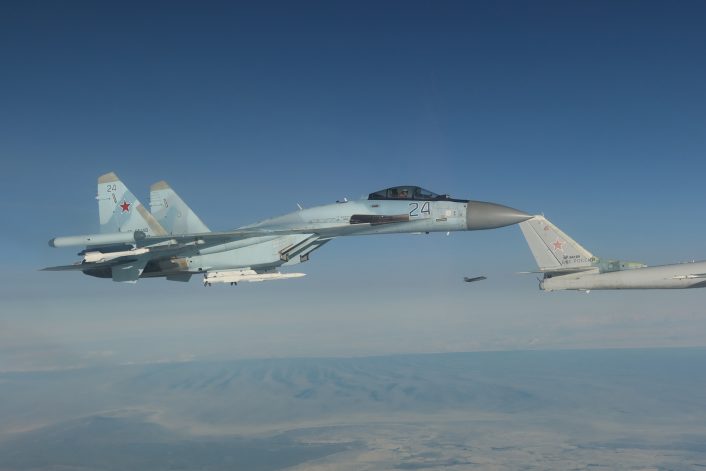
Russian missions inside the Alaska ADIZ happen quite frequently and they are mostly intended to test U.S. tactics and reaction times. There is also a possibility that these activities are conducted while other assets, such as the A-50 Mainstay or Il-20M Coot-A, operate nearby to “sniff” the F-35s’ electromagnetic emissions. However, it’s worth noting that the Lightning II aircraft were equipped with Radar Cross Section (RCS) enhancers (also known as “Luneburg lenses” or “radar reflectors”), meaning they were not operating in full stealth mode. This is standard practice for peacetime Quick Reaction Alert (QRA) missions, ensuring that no sensitive details about their radar signature were exposed.
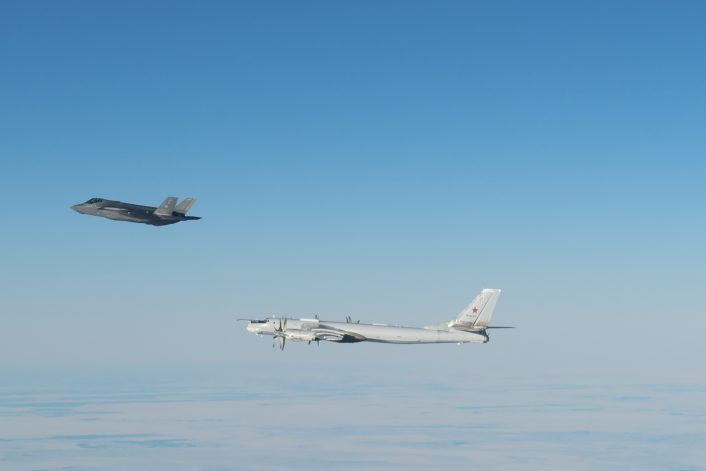
The F-35As, with tail code “AK”, were assigned to the 354th Fighter Wing from Eielson Air Force Base. Both the 355th Fighter Squadron and the 356th Fighter Squadron operate from Eielson. The base made the news recently, as a video showing an F-35A crashing within the fence line on Jan. 28, 2025, was circulated online. The pilot ejected safely.
Anyway, while this was not the first time F-35s based in Alaska were involved in the intercept of Russian or Chinese aircraft, we rarely got an opportunity to see the 5th generation aircraft flying so close to the Russian Flanker derivative.
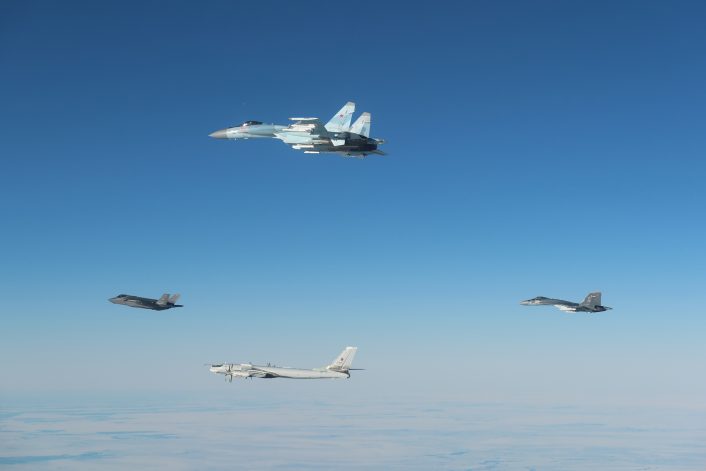
Air Defense Identification Zone
An ADIZ is a designated area of international airspace, extending beyond sovereign airspace, where the identification of all aircraft is required for national security purposes and as explained in other articles here at The Aviationist, there’s a significant difference between territorial airspace and ADIZ.
The territorial sky is the airspace extending 12 nautical miles (about 22 km) from a country’s coastline and, just like in territorial waters, foreign aircraft can’t enter without permission, as it is considered sovereign territory.
The Air Defense Identification Zone (ADIZ) is a designated airspace surrounding a nation or part of it where strict identification, tracking, and control of aircraft are enforced for national security reasons. Aircraft flying within these zones without proper authorization may be intercepted by fighter aircraft on Quick Reaction Alert (QRA). ADIZ boundaries often extend beyond national airspace covering territorial waters, and while not defined by international law, any civil aircraft entering these zones is closely monitored and required to provide flight details for identification. Military aircraft not intending to enter national airspace are generally exempt from ADIZ procedures, but foreign military planes within ADIZ may be intercepted, identified, and escorted.
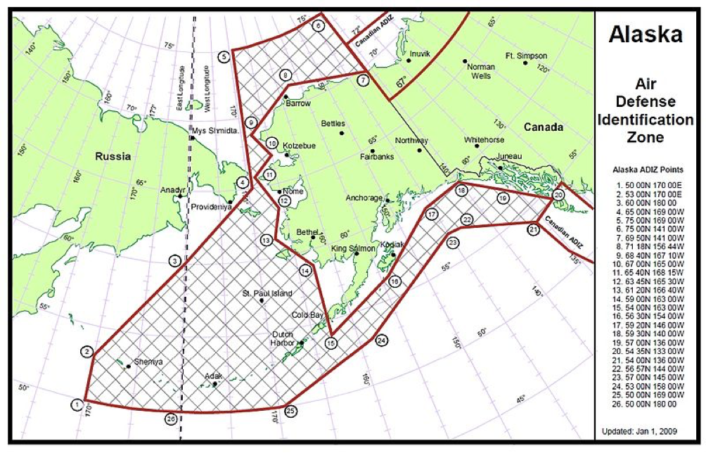
A notable episode
Although the latest intercepts were reportedly “uneventful,” not all close encounters between Russian and U.S. fighters within the Alaska ADIZ have been as calm.
On Sept. 23, 2024, NORAD assets conducted a similar mission to detect and track four Russian military aircraft (again, two Tu-95 Bear bombers and two Su-35S fighters) operating in international airspace within the Alaska ADIZ.
During the intercept a Russian Su-35 performed a dangerous maneuver, which was filmed from the cockpit of a U.S. F-16C fighter scrambled to identify and escort the Russian aircraft.
The video captures the moment the Russian Su-35 fighter jet executes a turn toward the F-16. The Su-35’s sleek silhouette becomes increasingly visible as it banks abruptly into the F-16, revealing its maneuver to the camera.
Gen. Gregory Guillot, Commander, NORAD and U.S. Northern Command, spoke on the event, stating: “On Monday (Sept. 23), NORAD aircraft flew a safe and disciplined intercept of Russian military aircraft in the Alaskan ADIZ. The conduct of one Russian Su-35 was unsafe, unprofessional, and endangered all – not what you’d see in a professional air force.”

